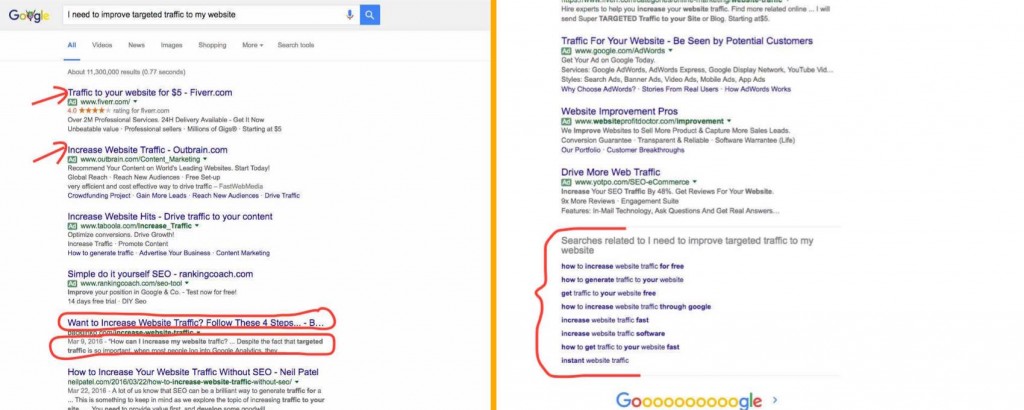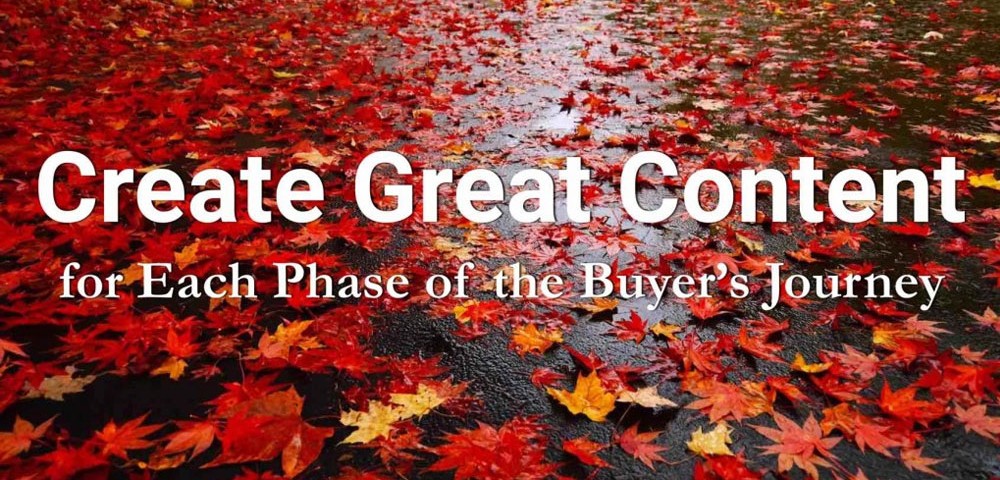Step One – The Buyer Persona
Step One is the development of your Buyer Persona. According to HubSpot, the Buyer Persona is a semi-fictional representation of your ideal customer based upon market research and real data about your existing customers.
The Buyer Persona development process involves identifying specific:
- Persona demographics
- Behavior patterns
- Economic, environmental and psychological motivations and goals
Be as specific and granular as possible; drilling down on the minute details of each individual Buyer Persona. We’ll cover the Buyer Persona in more depth in the next article. In the meantime, you can learn more about developing your Buyer Persona here. You can also visit our “How to Create Your Buyer Personas” article to learn how to create Buyer Personas for each of your Buyer Persona segments.
Step Two – Create the Persona’s “I am” Statement
With your Buyer Persona in hand, let’s start on the Awareness Phase section of the spreadsheet (see free download above). As you begin working on this, you’ll see how easy it is to begin populating all three segments of the worksheet.
Utilizing the “Buyer’s Journey Content Strategy Roadmap Template,” locate the row entitled “Awareness,” and then Column E within that row. In place of the, “I am a buyer aware that I have a problem” add the exact problem statement your Buyer Persona has in their mind upon recognizing symptoms or problems they have that need to be resolved. For one of our targeted Buyer Persona, we might add, “I am not getting enough targeted traffic to my website and I am probably missing significant revenue opportunities as a result.”
Step Three – Identify the Persona’s Specific Mad Libs or Thought Processes
The next step is to work on identifying the Buyer Persona’s specific Mad Libs or thought processes. Again utilizing the “Buyer’s Journey Content Strategy Roadmap Template,” look at columns F and G. Columns F & G prompt you with the kinds of thought processes your Buyer Personas are having around their issue:
- I need to improve…
- I need to prevent…
- I need to start…
- I need to stop…
- I need to optimize…
As the Buyer Personas experience the unwelcomed conditions and possibilities of their problem, finish those thought strings that occupy your their mind. There may be several thought sequences for each of the above “Mad Libs.”
Step Four – Identify Problem Keywords
After finishing the Mad Libs you then need to identify problem keywords. For each Mad Lib, you’ll need to identify Keyword Phrases that the Buyer Persona is likely to use to find information about the problems he or she is facing. If you are new at identifying keywords and phrases, start with one of the Mad Libs and turn it into a search query.
Let’s say our Buyer Persona is a mid-size business owner who needs more targeted traffic on her website. While she is too small to have a marketing team, her growth goals are too large not to have a trusted inbound marketing and web solutions company that can catalyze inbound leads and revenue growth.
If the Buyer Persona’s “I am” statement is, “I am not getting enough targeted traffic to my website and I am probably missing significant revenue opportunities as a result,” then her “I need to improve” statement might be, “I need to improve targeted traffic to my website.”
My first keyword phrase is going to be that very Mad Lib, “I need to improve targeted traffic to my website.” To test it, I am going to pop that search string into Google’s search engine. At the time of writing this article, the search returns a four pack of ads and then a list of organic results. After placing your keyword phrase in a search engine such as Google, do the following:
- Read the titles of all of the results and the meta data
- Make a list of the titles and phrases that are phrases your Buyer Persona is likely to use to find answers to their query
- Scroll to the bottom of the search page and look through the list of “Searches Related to…”
- Copy and paste any of the recommended search strings that are relevant to your Persona’s Mad Lib
- To dig deeper and get the best search phrases, search all of the strings you captured and read through the search results to see if there are any others you should use

Step Five – Attract
Audit and Map Your Entire Content Library
Our next step is to audit and map your entire content library. In column J and K of your worksheet, log any existing content or landing pages that speak to your buyer at this phase of the journey. Continue doing this for each of the four Journey phases.
If you do not have appropriate content yet, use the data in Steps One through Five to create your content strategy for new offers, landing pages and blog posts in each phase of the Buyer’s Journey. After mapping your existing content, review it for relevancy. Improve and optimize your existing content with the Mad Libs and Keyword Phrases you identified in Steps Three and Four.
In the next step, you’ll identify gaps in your existing content and begin pulling together an effective content strategy.
Step Six – Convert
Map the Content Offer that will Convert Your Buyer from a Visitor to a Lead
For this step, utilize the Content Library and Pick Lists tabs (in the Buyer’s Journey Content Strategy Roadmap spreadsheet) to map and create your conversion optimized content for each phase of the Buyer’s Journey.
Use columns B, C and D to help you identify the appropriate Offer Type, Offer Topic, Offer Title and Call-to-Action (CTA) Wording. To map the Offer Type use columns M, N, O and P. While working on this step remember that each landing page, blog and offer should have a meaningful and relevant call to action.
Step Seven – Close
Identify the Email Sequences that Move the Buyer Through the Buyer’s Journey
As you continue down the road to great content it is important to remember that it is a comprehensive, strategic process that converts a lead into a customer. In addition to excellent website landing pages, content and conversion processes, you’ll need third-party technologies, a salesperson or team to pass the inbound conversion-ready prospect to and internal operational process to make it all work seamlessly.
Blue Iris Marketing takes a holistic approach to lead nurturing. This holistic approach is woven through every phase of the Buyer’s Journey. As part of our holistic approach, we create personalized email sequences. Personalized email is powerful because it is written specifically for that person and is highly personalized to the buyer. Each email is written from the buyer’s perspective and is relevant to the phase of the Buyer’s Journey they are in at the time they receive it. It has a call to action that is powerful, compelling and moves the Buyer to the next steps.
Mapping Your Email Sequences. Identify the types of emails you’ll need for each content offer, what each email needs to say and the most appropriate calls to action to move the buyer towards conversion. There are many autoresponder email systems that you can use to nurture your leads through the Buyer’s Journey. The most popular are:
Be sure to choose the one that provides the features you’ll need – not only for your needs today – but also into the distant future. Changing providers is burdensome and time consuming and we find that many people will continue using a service they aren’t satisfied with rather than going through the hassle of changing.
Step Eight – Delight
Creating Personalization that Delights Your Prospect at Every Phase
The last step in our journey is the creation of personalized content. Your content should attract and delight your prospect at every phase. Our email and landing page technologies make it easy to personalize every touch point. If you are a newbie and don’t yet have access to this smart content technology, do your best to speak directly to the Buyer Persona’s needs at every touch point.








